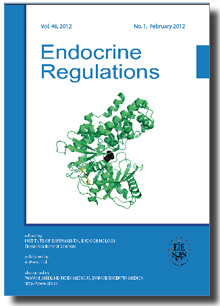Journal info
|
||
Select Journal
Journals
Bratislava Medical Journal Endocrine Regulations 2015 2014 2013 2012 2011 2010 2009 2008 2007 2006 2005 2004 2003 General Physiology and Biophysics Neoplasma Acta Virologica Studia Psychologica Cardiology Letters Psychológia a patopsych. dieťaťa Kovove Materialy-Metallic Materials Slovenská hudbaWebshop Cart
Endocrine Regulations Vol.48, No.3, p.113-119, 2014 |
||
| Title: The coexistence of renal cell carcinoma and diffuse large B-cell lymphoma with hypercalcemic crisis as the initial presentation | ||
| Author: H. Yilmaz, M. Namuslu, M. A. Bilgic, N. Bavbek, A. Akcay | ||
| Abstract: Severe hypercalcemia can be life threatening. The causes of hypercalcemia can be divided into seven categories: hyperparathyroidism, vitamin D-related causes, malignancy, medications, other endocrine disorders, genetic disorders, and miscellaneous causes. Evaluation of a patient with hypercalcemia should include a careful history and physical examination focusing on clinical manifestations of hypercalcemia, risk factors for malignancy, causative medications, and a family history of hypercalcemia-associated conditions (e.g. kidney stones). Hypercalcemia was clasified as serum levels of calcium: 1) mild hypercalcemia (calcium 14 mg/dl). We should keep in mind that severe hypercalcemia was originated from two or more causes. This is the first report in the literature; renal cell carcinoma (RCC) and diffuse large B-cell lymphoma (DLBCL) presented severe paraneoplastic hypercalcemia. |
||
| Keywords: severe hypercalcemia, paraneoplastic syndrome, renal cell carcinoma, diffuse large B-cell lymphoma | ||
| Year: 2014, Volume: 48, Issue: 3 | Page From: 113, Page To: 119 | |
| doi:10.4149/endo_2014_03_113 |
||
|
Price:
14.00 €
|
||
|
|
||

